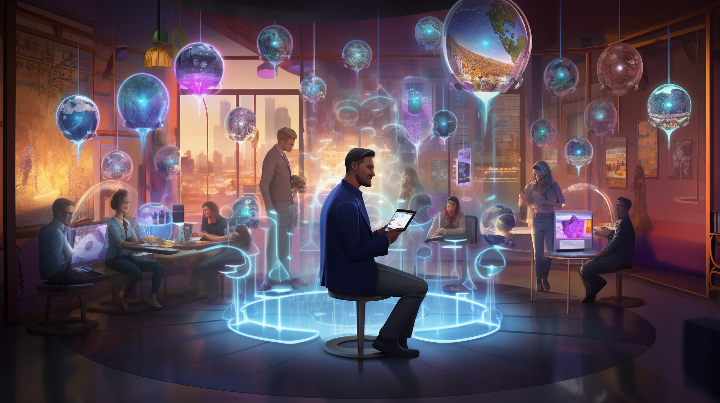
The Application Of AI In Robotics
You're living in a world transformed by AI and robotics. Imagine a factory where robots assemble products or a hospital where they assist in surgeries. You've heard of self-driving cars, haven't you? That's all thanks to AI.
This article will explore how AI's applied in robotics, its impact on industrial automation, its role in revolutionizing the medical field, and how it enhances autonomous vehicles.
Ready to dive into the future?
Evolution of Machine Learning in Automated Systems
You've probably noticed how machine learning has significantly evolved in automated systems, haven't you? It's no longer a tool for just predicting and solving complex equations. Nowadays, it's the core of many systems, particularly in robotics.
You see, AI-powered robots are learning and adapting on their own. They're not pre-programmed creatures anymore. They're evolving, learning from their experiences, and making decisions based on that learning.
Let's take driverless cars as an example. They use machine learning to navigate, avoid obstacles, and ensure passenger safety. This evolution doesn't just make them smarter; it makes them more efficient and reliable.
Impacts on Industrial Automation
It's remarkable how industrial automation has been revolutionized by introducing smart, automated machines. You've seen how tasks that once needed human intervention are now handled by AI-powered robots with precision and consistency. They're replacing manual labor and performing complex activities that demand high-level cognition.
You'd notice that production lines are more efficient, reducing downtime and waste. Even the quality of products has improved, as machines can now detect flaws that the human eye might miss. It's not just about cost savings but also about optimizing resources and boosting competitiveness.
Yet, you'd also realize that this revolution brings challenges - like the need for skilled professionals to manage these smart machines. You're both a witness and a participant in this rapidly changing industrial landscape.
Revolutionizing Medical Field
Like the industrial sector, the medical field is also experiencing a revolution. New technologies are transforming patient care and treatment methods. AI is pivotal, providing groundbreaking solutions in diagnosis, patient monitoring, and surgical procedures.
AI-powered robots assist surgeons in complex operations, enhancing precision and reducing human error. They're even programmed to perform certain procedures independently. Robots also help in inpatient rehab, assisting in physical therapies and exercises. They're used in remote patient monitoring, providing real-time data to healthcare professionals for timely intervention.
As a patient, you're assured of personalized care thanks to AI. So, embrace this revolution. It's not just about shiny tech; it's about your health and well-being.
Enhancing Autonomous Vehicles
Autonomous vehicles are being enhanced with the latest technology, making them safer and more efficient for everyday use. Imagine the time you'll save when your car drives itself, making your commute effortless and stress-free.
AI in robotics, particularly in autonomous vehicles, isn't just about convenience; it's also about safety. Advanced sensors and algorithms can detect potential hazards faster than you can and react accordingly.
This technology is also environmentally friendly; it's designed to optimize routes and reduce fuel consumption. With AI, your car doesn't just take you from point A to point B and learns from each journey, continually improving its performance.
Future Prospects and Challenges
You'll find that the prospects of these self-driving vehicles are vast, but they're not without challenges. Imagine a world where traffic accidents are drastically reduced, and your commute time becomes your own. That's the promise of autonomous vehicles. But they're not quite there yet.
They've got to overcome some significant hurdles first. They need to prove they can handle all weather conditions and unexpected road situations. They must win over public trust and navigate a complex regulatory landscape. And they must find a way to coexist with traditional cars for the foreseeable future.
It's a tough road ahead, but they could revolutionize how we travel if they can manage these challenges.
Conclusion
You've seen how AI in robotics transforms industries, revolutionizes healthcare, and enhances autonomous vehicles.
It's an exciting time, but we can't ignore the challenges ahead.
Let's embrace the future, navigate the hurdles, and harness the full potential of AI in robotics.
After all, it's not just about technology, it's about how we use it to improve our lives and our world.